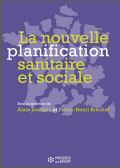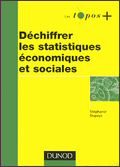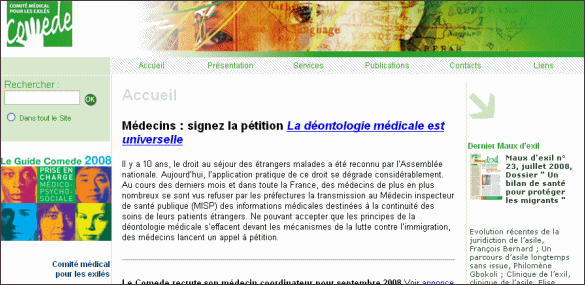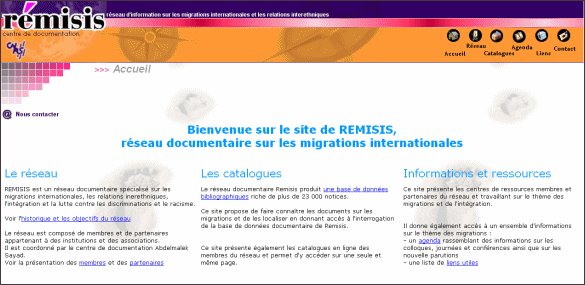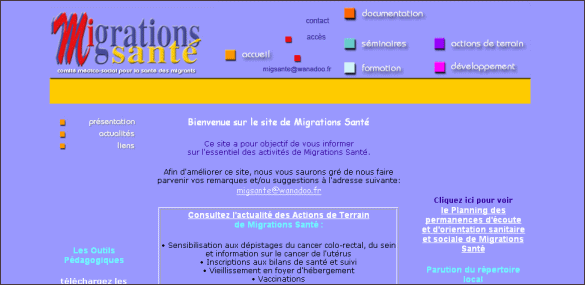LU POUR VOUS DE SEPTEMBRE 2008 : livres du mois - sites du mois - working papers
Tous les lu pour vous
LES LIVRES DU MOIS

L'HAD, une prise en charge hospitalière moderne.
Com-Ruelle L., Afrite A.
Paris : Elsevier - Masson : 2008 : 51 p.
L'hospitalisation à domicile existe depuis plus d'un demi siècle, mais son essor est très récent. Elle reste cependant encore trop méconnue dans son objet et son organisation et mérite d'être expliquée tant aux professionnels médicaux qu'aux malades susceptibles d'en bénéficier. Tel est l'objectif de cette publication réalisée par des chercheurs de l'Irdes en partenariat avec les laboratoires Bayer, qui dresse un panorama de l'HAD en France sous plusieurs aspects : définition, organisation des soins, financement, satisfaction des acteurs…
La nouvelle planification sanitaire et sociale.
Jourdain A. / dir., Brechat P.H./ dir.
Rennes : Presses de l'EHESP : 2008 : 247 p.
La décentralisation des politiques sociales et la déconcentration des programmes de santé ont généré un modèle de planification par plans et schémas qui s'est étendu progressivement à tout le champ sanitaire et social : de l'hôpital à la prévention en passant par l'urgence sociale et la gérontologie. Les avantages de ce modèle sont nombreux : il s'intéresse aux besoins de la population, il a le souci de l'efficience économique, sa démarche est rationnelle et volontariste, il favorise la transversalité de l'action ainsi que le renforcement de la coordination entre acteurs et institutions. Ses applications ne vont pourtant pas sans difficultés. La multiplication des schémas ne conduit-elle pas irrémédiablement à un éparpillement de l'action ? Comment améliorer par exemple la cohérence entre plan gérontologique, schéma hospitalier d'organisation des soins et plan régional de santé publique ? Commenta construire un continuum d'offres sociales, médico-sociales, de soins et de prévention par priorités, comme la prise en charge des besoins des personnes âgées ? Le temps est donc venu d'interroger la genèse de ce type d'action publique- et les formes qu'elle emprunte aujourd'hui, en repartant de quelques questions fondamentales : pourquoi planifier ? comment ? pour quoi faire ? Les réponses des auteurs – issus du milieu académique, des services de l'État, du management d'établissement et du secteur associatif – empruntent aux disciplines fondamentales (économie, sociologie, gestion…) et à l'analyse des pratiques des différents secteurs : social, personnes âgées, psychiatrie, hôpital, prévention.
La protection sociale en France : les notices : mise à jour 2008.
Montalembert M.
Paris : La Documentation Française : 2008 : 198 p.
Les Français sont attachés à un modèle social qui a, dans une large mesure, atteint l'objectif fixé lors de la création de la Sécurité sociale en 1945. Synonyme d'accès aux soins garanti à toute la population, et d'un meilleur niveau de vie pour les personnes âgées, la protection sociale s'est progressivement étendue à nombre de domaines : politiques en faveur des travailleurs, de l'enfance et de la famille, des personnes handicapées ou dépendantes... Confrontée, comme l'action publique dans son ensemble, à des défis majeurs : inflation des dépenses, chômage persistant, montée de l'exclusion... elle n'échappe pas aux remises en question. Mais comment sý retrouver dans les débats, multiples, sur la protection sociale ? Nombre d'enjeux : " fléxisécurité ", rôle respectif des différents acteurs (État, partenaires sociaux, collectivités...), impact économique des politiques sociales..., interrogent aujourd'hui les modalités, voire la légitimité même de la protection sociale. Cette édition actualisée d'un ouvrage de référence se veut une synthèse, accessible et sans parti pris, sur les nombreuses réformes qui ont été opérées, ou sont à l'ordre du jour.
Données urbaines. 5.
Pumain D. / coor., Mattei M.F./ coord
Institut national de la statistique et des études économiques. (Insee).
Paris : Anthropos, Economica : 2007 : 381 p.
Ce cinquième volume de la série « Données urbaines » est publié à l'initiative du CNRS, dans le cadre de son Programme Interdisciplinaire de Recherche sur la Ville, et de l'Insee. Comment lire les villes dans leurs facettes qu'on sait multiples et changeantes Le changement est porté par la gestion municipale et intercommunale, par les politiques de développement durable, mais aussi par les logiques d'entreprise aux échelles régionale et mondiale, tout comme par les nouvelles pratiques citadines. Enquêtes et statistiques permettent aux chercheurs de mettre en cohérence des aspects à première vue éclectiques et d'anticiper des transformations qui ne sont souvent perceptibles qu'à la marge dans le quotidien urbain. L'ambition de ce livre est de traduire ces constats et ces prévisions en termes simples, en tableaux et images synthétiques, faciles d'accès pour un large public. Décideurs, enseignants, étudiants, et simples citoyens, trouveront des éclairages nouveaux et des dossiers d'information précis sur des questions de gouvernance, sur les mobilités, proches ou lointaines, diurnes ou nocturnes, sur les pratiques sexuelles en ville, sur l'horizon et les stratégies spatiales des entreprises, sur les conséquences de la concurrence pour la croissance, sur la qualité de l'air et la santé des populations urbaines, ou encore sur les revenus et les activités dans les quartiers pauvres des villes.
Les acteurs du système de soins : les institutions et organismes français et européens responsables de la politique de santé.
Messi P., Le Borgne C.
Paris : Editions Huveaux France : 2008 : 232 p.
Cet ouvrage, mis à jour pour la troisième fois, recense tous les organismes qui interviennent dans la conception, le fonctionnement et l'administration du système de santé en France et en Europe. Il présente brièvement l'organisation, le rôle et les compétences de chacun, qu'il s'agisse de ministères, d'administrations, d'agences sanitaires, d'organismes consultatifs, de régimes d'assurance maladie, de syndicats, de fonds de financement en tout genre. Il consacre un chapitre spécifique aux instances régionales, dont le rôle s'est accru ces dernières années, et un autre sur les instances européennes.
Déchiffrer les statistiques économiques et sociales.
Dupays S.
Paris : Dunod : 2008 : 152 p.
Les statistiques sont omniprésentes (dans les études, les journaux...). Il est indispensable à tout étudiant qui souhaite comprendre le monde dans lequel il vit d'apprivoiser tous ces chiffres. L'objectif de ce livre est de mettre à la portée de tous les connaissances de base nécessaires pour comprendre les statistiques, se faire une opinion sur leur sens, leur pertinence, leur fiabilité... et leurs limites. Ce livre propose une analyse des chiffres qui font débat, un mode d'emploi des statistiques accessible à tous, une information claire et précise sur la manière dont sont construites les statistiques.
LES SITES DU MOIS DE SEPTEMBRE
Association Service Social Familial Migrants (ASSFAM)
http://www.assfam.org
Presentation
Cette association d'envergure nationale participe au dispositif d'accueil et d'aide à l'intégration des étrangers arrivant en France avec un titre de séjour. Le site propose les ressources documentaires suivantes : répertoire de sigles dans ses champs d'activité, les principaux textes législatifs français et communautaires sur le droit des étrangers, liste de dossiers thématiques disponibles au centre de documentation de l'ASSFAM, des fiches techniques et pratiques, fiches d'organismes.
Comité médical pour les exilés
http://www.comede.org
Presentation
Le Comede (Comité médical pour les exilés) a été créé en 1979 par la Cimade, Amnesty international et le Groupe accueil solidarité pour promouvoir la santé des exilés en France. Les activités du Centre de santé, de l'Espace Santé Droit et du Centre-ressources du Comede sont indissociables pour répondre aux objectifs de l'association. Il assure auprès des réfugiés, demandeurs d'asile, mineurs étrangers isolés et autres migrants/étrangers en situation précaire de séjour et assuré des services spécialisés en matière de prévention et de soins, de bilan de santé, d'accès aux soins, d'expertise médico-juridique et de formation professionnelle. Il publie un manuel pratique de prise en charge médico-psycho-sociale des exilés et migrants/étrangers en situation précaire, ses rapports d'activité, une revue « Maux d'Exils » disponibles en ligne.
La santé pour tous. The health prevention site for foreigners in France
http://www.lasantepourtous.com
Presentation
Réalisé par l'Institut de Prévention et d'Education pour la Santé (Inpes), ce site est destiné à la prévention en matière de santé pour les étrangers résidant en France. L'espace grand public propose des livrets, réalisés par les acteurs professionnels et associatifs de la santé, de l'action sociale, du droit et de l'Administration, qui offrent de l'information sur diverses thématiques liées et à la santé et donnent des réponses aux problèmes que vous pouvez rencontrer dans vos démarches administratives et juridiques. Ces documents sont disponibles en plus d'une vingtaine de langue. Il met également à disposition des répertoires d'adresses utiles (associations, hôpitaux, centres de prévention et dépistage etc…). L'espace professionnel regroupe des références documentaires pour ceux qui travaillent auprès des migrants.
Réseau d'information sur les migrations internationales et les relations interethniques (REMISIS)
http://www.remisis.org
Presentation
REMISIS est un réseau documentaire spécialisé sur les migrations internationales, les relations interethniques, l'intégration et la lutte contre les discriminations et le racisme. Ce site propose de faire connaître les documents sur les migrations et de les localiser en donnant accès à l'interrogation de la base de données documentaire de Remisis. De nombreux documents ont une thématique sanitaire. Ce site présente également les catalogues en ligne des membres du réseau et permet d'y accéder sur une seule et même page. Il offre une riche liste de liens sur le thème des migrations.
Comité médico-social pour la santé des migrants
http://www.migrations-sante.org
Presentation
L'association se propose de contribuer à la promotion de la santé des migrants et de leurs familles et à leur intégration en améliorant l'accès aux soins et en développant des actions de formation, de recherche et d'information auprès des professionnels de la santé et de l'action sociale; en organisant la collecte d'informations et de données concernant les problèmes sanitaires et sociaux auxquels sont confrontés les migrants ; en mettant en place des recherches-actions ; en analysant les besoins prioritaires en terme de santé communautaire; en créant des outils pédagogiques appropriés à l'éducation pour la santé; en organisant des sessions de formation en direction des professionnels de la santé et de l'action sociale ; en mettant à la disposition du public des données et en diffusant l'information par tous les moyens écrits (revue, lettre), audiovisuels, et multimédia. Son site présente l'essentiel de l'activité de l'association et met en ligne une plaquette de prévention du Sida en 14 langues, son catalogue de formations, le planning de ses permanences d'écoute et d'orientation sanitaire et sociale, ses catalogues d'outils pédagogiques et de sa revue.
Autres sites d'intérêt dans le domaine
Agence Nationale de l'Accueil des Etrangers et des Migrations. (ANAEM)
Groupe d'information et de soutien des immigrés. (GISTI)
Observatoire du droit à la santé des étrangers. (ODSE)
Site national de l'histoire de l'immigration
http://histoire-immigration.fr
Site hors thème
ARgSES, Arguments socio-économiques pour la santé
http://argses.free.fr/
Présentation
ARgSES est une association de chercheurs en économie de la santé. Ses membres fondateurs ont fait la plus grande partie de leur carrière à la Division d'économie médicale du Credoc, puis ils ont contribué activement à la création du Credes (actuellement Irdes) en 1985. Ce site rassemble les principales publications de ces chercheurs depuis janvier 1998 couvrant les diverses thématiques de l'économie de la santé.
VU DE L'ETRANGER : QUELQUES WORKING PAPERS ANALYSES
Assurance maladie
Income, Poverty, and Health Insurance Coverage in the United States: 2007. 

Revenu, pauvreté et couverture maladie aux Etats-Unis : 2007.
Denavas-Walt C., Proctor B.D., Smith J.C.
Washington : U.S. Government Printing Office : 2008/08
Real median household income in the United States climbed 1.3 percent between 2006 and 2007, reaching $50,233, according to a report released today by the U.S. Census Bureau. This is the third annual increase in real median household income. Meanwhile, the nation's official poverty rate in 2007 was 12.5 percent, not statistically different from 2006. There were 37.3 million people in poverty in 2007, up from 36.5 million in 2006. The number of people without health insurance coverage declined from 47 million (15.8 percent) in 2006 to 45.7 million (15.3 percent) in 2007. These findings are contained in the report Income, Poverty, and Health Insurance Coverage in the United States: 2007 The data were compiled from information collected in the 2008 Current Population Survey (CPS) Annual Social and Economic Supplement (ASEC). Also released today were income, poverty and earnings data from the 2007 American Community Survey (ACS) for all states and congressional districts, as well as for metropolitan areas, counties, cities and American Indian/Alaska Native areas of 65,000 population or more.
Dépenses de santé
Use of propensity scores in non-linear response models : the case for health care expenditures. 

Utlisation de scores de propension dans des modèles de réponses non linéaires : le cas des dépenses de santé.
Basu A., Polsky D., Manning W.G.
Cambridge : NBER : 2008/06 : 53p.
Under the assumption of no unmeasured confounders, a large literature exists on methods that can be used to estimating average treatment effects (ATE) from observational data and that spans regression models, propensity score adjustments using stratification, weighting or regression and even the combination of both as in doubly-robust estimators. However, comparison of these alternative methods is sparse in the context of data generated via non-linear models where treatment effects are heterogeneous, such as is in the case of healthcare cost data. In this paper, we compare the performance of alternative regression and propensity score-based estimators in estimating average treatment effects on outcomes that are generated via non-linear models. Using simulations, we find that in moderate size samples (n= 5000), balancing on estimated propensity scores balances the covariate means across treatment arms but fails to balance higher-order moments and covariances amongst covariates, raising concern about its use in non-linear outcomes generating mechanisms. We also find that besides inverse-probability weighting (IPW) with propensity scores, no one estimator is consistent under all data generating mechanisms. The IPW estimator is itself prone to inconsistency due to misspecification of the model for estimating propensity scores. Even when it is consistent, the IPW estimator is usually extremely inefficient. Thus care should be taken before naively applying any one estimator to estimate ATE in these data. We develop a recommendation for an algorithm which may help applied researchers to arrive at the optimal estimator. We illustrate the application of this algorithm and also the performance of alternative methods in a cost dataset on breast cancer treatment.
Etat de santé
Health status determinants : lifestyles, environment, health care resources and efficiency. 

Déterminants de l'état de santé: style de vie, environnement socio-économique, ressources médicales et efficacité.
Joumard I., Andre C., Nicq C, Chatal O.
Paris : OCDE : 2008/08 : 72 p.
Ce document examine la contribution des soins médicaux ainsi que d'autres facteurs à l'état de santé de la population et tente de déterminer si les dépenses dans le domaine de la santé produisent les mêmes résultats selon les pays de l'OCDE. En premier lieu, il s'interroge sur les avantages et les inconvénients des différents indicateurs de l'état de santé et en conclut que, malgré leurs défauts, les indicateurs de mortalité et de longévité demeurent les meilleures approximations disponibles. Il suggère ensuite que les évolutions des dépenses de santé, des modes de vie (consommation de tabac et d'alcool, régime alimentaire), du niveau d'éducation, de la pollution et des revenus ont été des facteurs importants de l'amélioration de l'état de santé. Enfin, il estime la capacité relative des différents pays à transformer les ressources médicales en accroissement de la longévité, en s'appuyant sur deux méthodes différentes (régressions sur données de panel et analyse d'enveloppement de données) qui donnent des résultats remarquablement similaires. Les estimations empiriques suggèrent que l'espérance de vie pourrait s'accroitre de presque trois ans en moyenne dans les pays de l'OCDE si les ressources médicales disponibles étaient utilisées plus efficacement, tandis qu'une augmentation des dépenses totales de santé de 10% se traduirait par trois à quatre mois d'espérance de vie supplémentaire.
What good for wealth without health ? The effect of health on the marginal utility of the consumption. 

A quoi bon être riche sans être en bonne santé ? L'effet de l'état de santé sur l'utilité marginale de consommation.
Finkelstein A., Luttmer E.F.P., Notowidigdo M.J.
Cambridge : NBER : 2008/06 : 51 p.
We estimate how the marginal utility of consumption varies with health. To do so, we develop a simple model in which the impact of health on the marginal utility of consumption can be estimated from data on permanent income, health, and utility proxies. We estimate the model using the Health and Retirement Study's panel data on the elderly and near-elderly, and proxy for utility with measures of subjective well-being. We find robust evidence that the marginal utility of consumption declines as health deteriorates. Our central estimate is that a one-standard-deviation increase in the number of chronic diseases is associated with an 11 percent decline in the marginal utility of consumption relative to this marginal utility when the individual has no chronic diseases. The 95 percent confidence interval allows us to reject declines in marginal utility of less than 2 percent or more than 17 percent. Point estimates from a wide range of alternative specifications tend to lie within this confidence interval. We present some simple, illustrative calibration results that suggest that state dependence of the magnitude we estimate can have a substantial effect on important economic problems such as the optimal level of health insurance benefits and the optimal level of life-cycle savings.
The Role of Childhood Health for the Intergenerational Transmission of Human Capital: Evidence from Administrative Data. 

Le rôle de la santé durant l'enfance pour la transmission intergénérationnelle du capital humain : résultats issues de données administratives.
Salm M.
Bonn : The Institute for the Study of Labor : 2008/08 : 38 p.
We use unique administrative German data to examine the role of childhood health for the intergenerational transmission of human capital. Specifically, we examine the extent to which a comprehensive list of health conditions – diagnosed by government physicians – can account for developmental gaps between the children of college educated parents and those of less educated parents. In total, health conditions explain 18% of the gap in cognitive ability and 65% of that in language ability, based on estimations with sibling fixed effects. Thus, policies aimed at reducing disparities in child achievement should also focus on improving the health of disadvantaged children.
Hôpital
Is Hospital Treatment in Australia Inequitable? Evidence from the HILDA Survey. 

Le traitement à l'hôpital est-il inéquitable en Australie ? Données issues de l'enquête HILDA.
Goodall S., Scott A.
Melbourne : Melbourne Institute of Applied economics and social research : 2008 : 36 p.
The pursuit of equity is a key objective of many health care systems, including Australia's Medicare. Using the Household, Income and Labour Dynamics in Australia (HILDA) survey, we measured the extent of inequity in the utilisation of hospital services. We used methodology developed by the ECuity project for measuring horizontal inequity indices. We examine income-related health care inequities in both inpatient and day patient access and utilisation, whilst controlling for morbidity, demographic and socio-economic variables. The probability of hospital inpatient admission appeared equitable, but the probability of a day patient visit demonstrated a pro-rich distribution. Even more pronounced were the findings on the quantity of visits. The positive horizontal inequality indices indicate a degree of inequity favouring the rich, especially for inpatient utilisation. The pro-rich distribution of the probability of a day patient visit was associated with whether individuals held private health insurance. These results suggest that in Australia, which has a universal and comprehensive health system, the rich and poor are not treated equally according to need. Further research should investigate whether the causes of inequities lie in the preferences of individuals or the preferences of health care providers.
Price Adjustment in the Hospital Sector. 

Ajustement des prix dans le secteur hospitalier.
Miraldo M., Siciliani L., Street A.
York : University of York : 2008/08 : 27 p.
Prospective payment systems are currently used in many OECD countries, where hospitals are paid a fixed price for each patient treated. We develop a theoretical model to analyse the properties of the optimal fixed prices to be paid to hospitals when no lump-sum transfers are allowed and when the price can differ across providers to reflect observable exogenous differences in costs (for example land, building and staff costs). We find that: a) when the marginal benefit from treatment is decreasing and the cost function is the (commonly used) power function, the optimal price adjustment for hospitals with higher costs is positive but partial; if the marginal benefit from treatment is constant, then the price is identical across providers; b) if the cost function is exponential, then the price adjustment is positive even when the marginal benefit from treatment is constant; c) the optimal price is lower when lump-sum transfers are not allowed, compared to when they are allowed; d) higher inequality aversion of the purchaser is associated with an increase in the price for the high-cost providers and a reduction in the price of the low-cost providers.
Analyzing the determinants of willingness-to-pay values for testing the validity of the contingent valuation method. Application to home care compared to hospital care. 

Analyse des déterminants des valeurs de la propension à payer pour tester la validité de la méthode d'évaluation contingente. Application aux soins à domicile comparés aux soins hospitaliers.
Carrere M.O., Havet N., Morelle M., Remonnay R.
Ecully : Groupe d'Analyse et de Théorie Economique : 2008 : 32 p.
The contingent valuation (CV) method is an attractive approach for comparing home care to hospital care in which the only difference is patients' well-being during the treatment process and not health outcomes. We considered the empirical situation of blood transfusion (BT) in cancer patients and collected willingness to pay (WTP) values among BT users. Our main objective was to test the validity of the CV method, namely its ability to elicit true preferences. Firstly, possible determinants of WTP values and their expected influences were identified, from both economic and non economic literature and from the findings of a pilot study. Secondly, they were compared to predicted influences resulting from appropriate econometric analysis of WTP values elicited by a bidding process. From the health economics literature it appeared that the double-hurdle model is the most appropriate approach to account for zero values and protest responses. However, because the number of protest responses was too small, we used a truncated regression model. None of the 7 hypothesized influences was invalidated by econometric results. The anchoring bias hypothesis was confirmed. The WTP for home BT compared to hospital BT increased with household income, with previous experience of home care, with living far from the hospital and with low quality of life. Conversely, it was lower for advanced-stage (palliative or terminal) than for early-stage (curative) patients. We conclude that the CV approach is acceptable to severely ill patients. Moreover, WTP values demonstrate good validity given that influences predicted by our model are consistent with expected determinants.
Inégalités sociales
Closing the gap in a generation: Health equity through action on the social determinants of health. 

Combler le fossé en une génération : Instaurer l'équité en agissant sur les déterminants sociaux de la santé.
Organisation Mondiale de la Santé. (OMS). Commission sur les Déterminants Sociaux de la Santé. Genève. CHE , World Health Organization. Commission on the Social Determinants of Health. (CSDH).
Genève : OMS : 2008 : 256p.
The Final Report of the Commission on Social Determinants of Health sets out key areas of daily living conditions and of the underlying structural drivers that influence them in which action is needed. It provides analysis of social determinants of health and concrete examples of types of action that have proven effective in improving health and health equity in countries at all levels of socioeconomic development. Part 1 sets the scene, laying out the rationale for a global movement to advance health equity through action on the social determinants of health. It illustrates the extent of the problem between and within countries, describes what the Commission believes the causes of health inequities are, and points to where solutions may lie. Part 2 outlines the approach the Commission took to evidence, and to the indispensable value of acknowledging and using the rich diversity of different types of knowledge. It describes the rationale that was applied in selecting social determinants for investigation and suggests, by means of a conceptual framework, how these may interact with one another. Parts 3, 4, and 5 set out in more detail the Commission s findings and recommendations. The chapters in Part 3 deal with the conditions of daily living the more easily visible aspects of birth, growth, and education; of living and working; and of using health care. The chapters in Part 4 look at more structural conditions social and economic policies that shape growing, living, and working; the relative roles of state and market in providing for good and equitable health; and the wide international and global conditions that can help or hinder national and local action for health equity. Part 5 focuses on the critical importance of data not simply conventional research, but living evidence of progress or deterioration in the quality of people s lives and health that can only be attained through commitment to and capacity in health equity surveillance and monitoring. Part 6, finally, reprises the global networks the regional connections to civil society worldwide, the growing caucus of country partners taking the social determinants of health agenda forward, the vital research agendas, and the opportunities for change at the level of global governance and global institutions that the Commission has built and on which the future of a global movement for health equity will depend.
Health inequalities by education, income and wealth : a comparison of 11 european countries and the US. 

Inégalités de santé liés à l'éducation, le revenu et la richesse économique : étude comparée de 11 pays européens et les Etats-Unis.
Jurges H.
Mannheim : MEA : 2007 : 13 p.
This paper compares education, income and wealth-related health inequalities using data from 11 European countries and the US. The health distribution of the US, England and France are relatively unequal independent of the stratifying variable, while Switzerland or Austria always have relatively equal distribution. Some countries such as Italy dramatically changes rank depending on stratifying variable.
Médicaments
External referencing and pharmaceutical price negotiation. 

Prix de référence externe et négociation des prix des médicaments.
Garcia Marinoso B., Jelovac I., Olivella P.
Ecully : Groupe d'Analyse et de Théorie Economique : 2008/05 : 36 p.
External referencing (ER) imposes a price cap for pharmaceuticals based on prices of identical products in foreign countries. Suppose a foreign country (F) negotiates prices with a pharmaceutical firm while a home country (H) can either negotiate independently or implement ER based on the foreign price. We show that country H always prefers ER if (i) it can condition ER on the drug being subsidized in the foreign country and (ii) copayments are higher in H than in F. H's preference is<br />reinforced when the difference between country copayments is large and/or H's population is small. External referencing by H always harms F if (ii) holds, but less so if (i) holds.
Soins de santé primaire
Prescribing in primary care. Understanding what shapes GPs' prescribing choices and how might these be changed. 

Prescrire en soins de santé primaire. Comprendre quelles formes prennent les choix en matière de prescription et comment on peut les modifier.
Scoggins A., Tiessen J., Ling T., Rabinovich L.
Santa Monica : Rand corporation : 2007 : 44 p.
This report, which was commissioned by the National Audit Office (NAO), presents the results of a prescribing in primary care study which aims to understand what shapes general practitioners' (GPs') prescribing decisions, and how the cost efficiency of prescribing might be improved in the future. This qualitative study contributes to the NAO's larger investigation into prescribing in primary care in England, and more specifically how financial savings can be delivered by helping primary care prescribing to deliver better value for patients.
Pay for Performance in California's Workers' Compensation Medical Treatment System : An assessment of Options, Challenges, and Potential Benefits. 

La rémunération à la performance dans le système californien de compensation des traitements médicaux des travailleurs en Californie : évaluation des options, des challenges et des bénéfices potentiels.
Wynn B.O., Sorbero M.E.
San Franscico : Rand Corporation : 2008 : 48 p.
Over the past few years, nonoccupational group health-insurance programs and health plans have implemented initiatives to improve the quality and efficiency of care through incentive programs, typically called “pay for performance,” or P4P. In addition, Medicare program administrators are evaluating how P4P incentives might be incorporated into Medicare payment systems. This paper assesses the options, challenges, and potential benefits of adopting P4P incentives for physician services in California's workers' compensation program. It offers three models that might be able to surmount the challenges, provided that the stakeholders have the commitment and trust to work through the design issues and allow the P4P program to evolve over time. P4P alone will not be sufficient to drive value-based medical care provided to injured workers; rather, it should be considered as part of a multipronged set of strategies designed to increase the efficient delivery of high-quality care that enables rapid and sustained return to work.
L'accessibilité et la continuité des services de santé : une étude sur la première ligne au Québec. Rapport de recherche. 

Pineault R., Levesque J.F., Roberge D., Hamel M., Lamarche P., Haggerty J.
Québec : INSPQ : 2008 : ix+83 p.
Cette étude, menée dans deux régions socio-sanitaires du Québec, Montréal et la Montérégie, porte sur les modèles d'organisation des services médicaux de première ligne et leur influence sur l'accessibilité et l'utilisation des services de santé par la population ainsi que sur l'expérience de soins des utilisateurs des services. Le principal but de l'étude est d'identifier les modèles d'organisation des services de première ligne les mieux adaptés et les plus prometteurs pour répondre aux besoins et aux attentes de la population.
Systèmes de santé
Organizing the U.S. Health care Delivery System for High Performance. 

Organisation du système des soins américains pour une performance plus grande.
Shih A., Davis K., Schoenbaum S.C., Gauthier A., Nuzum R., Mc Carthy M.
New York : The Commonwealth Fund : 2008/07 : 60 p.
This report from The Commonwealth Fund Commission on a High Performance Health System examines fragmentation in our health care delivery system and offers policy recommendations to stimulate greater organization—established mechanisms for working across providers and care settings. Fragmentation fosters frustrating and dangerous patient experiences, especially for patients obtaining care from multiple providers in a variety of settings. It also leads to waste and duplication, hindering providers' ability to deliver high-quality, efficient care. Moreover, our fragmented system rewards high-cost, intensive medical intervention over higher-value primary care, including preventive medicine and the management of chronic illness. The solutions are complex and will require new financial incentives, changes to the regulatory, professional, and educational environments, and support for new infrastructure. But as a nation, we can no longer tolerate the status quo of poor health system performance. Greater organization is a critical step on the path to higher performance.
Travail et santé
Contractual Conditions, Working conditions, Health and Well-Being in the British Household Panel Survey. 

Types de contrats, conditions de travail, état de santé et bien-être dans l'enquête "British Household Panel Survey".
Robone S., Johns A.M., Rice N.
York : HEDG : 2008/07 : 36 p.
We consider the effects of contractual and working conditions on self-assessed health and psychological well-being using twelve waves (1991/92 – 2002/2003) of the British Household Panel Survey. While one branch of the literature suggests that “atypical” contractual conditions have a significant impact on health and well-being, another suggests that health is damaged by adverse working conditions. As far as we are aware, previous studies have not explicitly considered the two factors jointly. Our aim is to combine the two branches of the literature to assess the distinct effects of contractual and working conditions on health and psychological well-being and how these effects vary across individuals. For self-assessed health the dependent variable is categorical, and we estimate non-linear dynamic panel ordered probit models, while for psychological well-being we estimate a dynamic linear specification. Our estimates show that being unsatisfied with the number of hours worked has a negative influence on the health of individuals who have a part-time job. Having a high level of employability appears to influence positively the health and psychological well-being of individuals with temporary job arrangements. Family structure appears to influence the health and well-being of workers with atypical contractual conditions.
